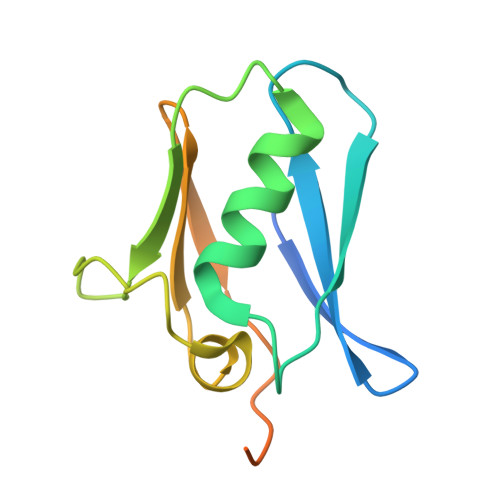Structural Insights into Mitochondrial Calcium Uniporter Regulation by Divalent Cations.
Lee, S.K., Shanmughapriya, S., Mok, M.C., Dong, Z., Tomar, D., Carvalho, E., Rajan, S., Junop, M.S., Madesh, M., Stathopulos, P.B.(2016) Cell Chem Biol 23: 1157-1169
- PubMed: 27569754
- DOI: https://doi.org/10.1016/j.chembiol.2016.07.012
- Primary Citation of Related Structures:
5KUE, 5KUG, 5KUI, 5KUJ - PubMed Abstract:
Calcium (Ca(2+)) flux into the matrix is tightly controlled by the mitochondrial Ca(2+) uniporter (MCU) due to vital roles in cell death and bioenergetics. However, the precise atomic mechanisms of MCU regulation remain unclear. Here, we solved the crystal structure of the N-terminal matrix domain of human MCU, revealing a β-grasp-like fold with a cluster of negatively charged residues that interacts with divalent cations. Binding of Ca(2+) or Mg(2+) destabilizes and shifts the self-association equilibrium of the domain toward monomer. Mutational disruption of the acidic face weakens oligomerization of the isolated matrix domain and full-length human protein similar to cation binding and markedly decreases MCU activity. Moreover, mitochondrial Mg(2+) loading or blockade of mitochondrial Ca(2+) extrusion suppresses MCU Ca(2+)-uptake rates. Collectively, our data reveal that the β-grasp-like matrix region harbors an MCU-regulating acidic patch that inhibits human MCU activity in response to Mg(2+) and Ca(2+) binding.
- Department of Physiology and Pharmacology, Schulich School of Medicine and Dentistry, Western University, London, ON, Canada, N6A 5C1.
Organizational Affiliation:
















